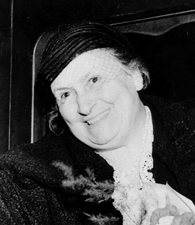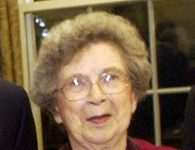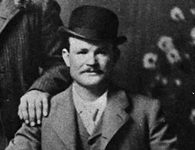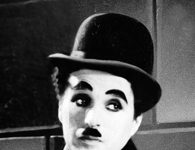Maria Montessori’s innovative approach to education left an indelible mark on the way in which we view child development. Her world-famous educational method focused on the discovery of each child’s unique potential, and recognized a close interaction with the environment as an essential element of mental, emotional, physical and spiritual growth in children.
Maria Montessori’s Early Days
Maria Montessori was born in the town of Chiaravalle, in the Italian province of Ancona, on August 31, 1870. The daughter of Alessandro Montessori, a government official, and Renide Stoppani, a politically active and well-educated woman, Montessori was brought up in a household that put a strong emphasis on education. When she was a child, her family moved to Rome, where a close proximity to museums and libraries enhanced the quality of her early learning.
At 13, Montessori defied traditional gender roles to study engineering at an all-boys technical school. She abandoned this career path to study medicine, and entered the University of Rome in 1890. Six years later, she became the first woman in Italy to be awarded a medical degree.
Sources in this Story
- NNDB: Maria Montessori
- The International Montessori Index: Maria Montessori, MD (1870-1952)
- North American Montessori Teachers Association: Maria Montessori: A Brief Biography
- The Informal Education homepage: Maria Montessori and Informal Education
Montessori’s Notable Accomplishments
As a doctor, she focused on the treatment of poor children and children with special needs. The tremendous success of her work taught her a great deal about how children learn and the importance of the environment in the educational process.
In 1901, she was accepted into the University of Rome to pursue studies in psychology and philosophy, and earned a chair as professor of anthropology in 1904. Two years later, however, she abandoned her university position and her medical practice in order to follow her true calling, the education of children.
In 1907, Montessori founded the first Casa dei Bambini (“Children’s House”) in the poverty-stricken Roman district of San Lorenzo. Her goal was to create a suitable environment for working-class children to live and learn. Montessori’s approach emphasized self-determination and self-realization as essential elements of early education.
She believed that each child “learns everything without knowing he is learning it, and in doing so passes little from the unconscious to the conscious, treading always in the paths of joy and love.”
Her famous educational method was developed by studying these children. “Children teach themselves. This simple but profound truth inspired Montessori’s lifelong pursuit of educational reform, methodology, psychology, teaching, and teacher training—all based on her dedication to furthering the self-creating process of the child,” writes D. Renee Pendleton of the North American Montessori Teachers’ Association.
Maria Montessori had several notable adherents in the United States, such as Helen Keller, Thomas Edison and Alexander Graham Bell, who with his wife founded the Montessori Educational Association in their own home in Washington, D.C.
In 1915, Montessori presented a “glass house” schoolroom exhibit to the Panama-Pacific International Exhibition in San Francisco: for a period of four months, spectators could observe 21 children learn according to Montessori’s method. Montessori was invited by the Spanish government to open a research institute and conducted a series of teacher training courses in London. She served as an Italian government school inspector from 1922 until 1934, when her opposition to fascism drove her out of the country.
The Woman and Her Work
- “The Montessori Method,” by Maria Montessori
- “The Secret of Childhood,” by Maria Montessori
- “The Absorbent Mind,” by Maria Montessori
- “Maria Montessori: Her Life and Work,” by E.M. Standing
- “Montessori: The Science behind the Genius,” by Angeline Stoll Lillard
The Rest of the Story
After she left Italy, Montessori lived and worked in India, where she developed the Education for Peace program, in which she recorded many of the ideas that governed her work at large and which earned her three nominations for the Nobel Peace Prize, in 1949, 1950 and 1951.
She eventually settled in the Netherlands, where she died on May 6, 1952. The Association Montessori Internationale, the organization she founded in 1929 to disseminate her educational method, still exists today.
This article was originally written by Anita Gutierrez-Folch; it was updated August 27, 2017.











